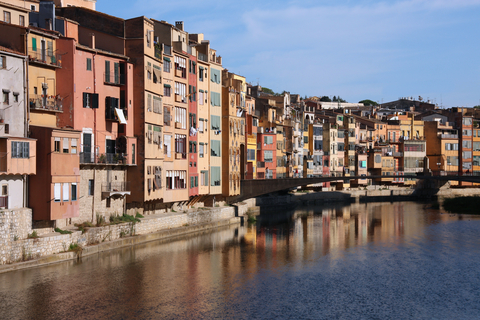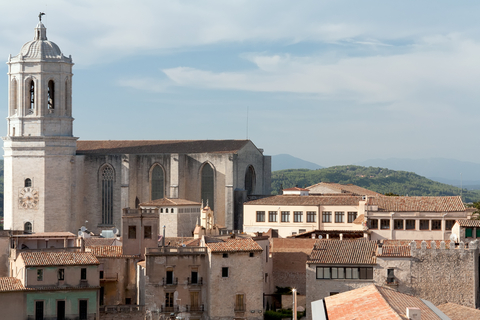The nearest big city to the Costa Brava is Girona, which was founded in 79 BC on the confluence of four rivers. The city is popular among tourists staying on the coast, as well as day trippers up from Barcelona due to the excellent rail connection. And also remember that the Cellar de Can Roca, crowned the best restaurant in the world earlier this year, is located in Girona’ s narrow streets, making the city a Mecca for foodies too.

Many people arrive at Girona-Costa Brava airport to be bused to the coastal resorts for their fortnight of sunshine, missing the city entirely. However, it is definitely worthwhile taking a day trip although perhaps better to avoid the summer when the heat can be unbearable. Girona, not undeservedly, has a reputation for temperature extremes and it is more comfortable in spring or autumn than at the height of the tourist season, or choose a sunny winter’s day.
Over the course of its history Girona has been under siege on no less than twenty five occasions and has been captured seven times; it has been ruled by the Romans, the Visigoths and the Moors, before being reconquered by Charlemagne in 785 AD.
During the 12th century the Jewish population flourished until 1492 when they were expelled from Catalonia by the Catholic Kings, but the Jewish quarter of the city remains one of the best preserved in Europe.
And then Girona was besieged on numerous occasions by the French, including the 1809 siege by Napoleonic troops that lasted seven months until disease and famine forced the city to capitulate. After this the city was ruled by the French until 1813.
Sightseeing
While it doesn’t have the cosmopolitan feel of Barcelona, nor the scale, and neither does it have what is one of the most famous sports teams in the world, it has a number of attractions all the same. Like many old towns that have outgrown themselves, the city centre is quite different to the later expansion, with narrow streets and the remains of the city walls, while along the bank of the river Onyar are the nineteenth century “painted houses” providing one of the most emblematic views of the city.
This stretch of river is spanned by a bridge designed by Gustav Eiffel and the area is full of pavement cafés, bars and restaurants, from which you can enjoy the view, while the nearby Rambla de la Llibertat, with its stone arcades, provides a worthwhile stroll and welcome shade in summer. Nearby is Carrer de Sant Llorenç, with the remains of the Jewish quarter and a museum dedicated to the city’s Jewish heritage.

The city is also home to the magnificent Gothic cathedral that has the widest Gothic nave of any church in the world, at 23 metres, and the second widest of any style nave after only the Vatican’s St Peter’s Basilica. Constructions started in 1416, with the Baroque facade beginning construction in 1606 that was only completed in the 1960s – talk about a long term project!
Also closeby are the Romanesque Banys Àrabs, or Arab baths. Constructed in the 12th century in the style of Muslim baths that at the time were fashionable, the current name only became popular in the nineteenth century and became public property in 1929 after which restoration work was allowed to take place.
And a walk along the city walls is worthwhile doing too if you have time. Although reconstructed after being partially demolished in the 19th century, the offer an excellent vantage point to view the area around.
Annual events
The flower show takes place every year in May when the old town becomes full of all kinds of displays of flowers. The air takes on a sweet scent, but those of us who suffer from hay fever just curse. The flowers are absolutely overpowering at this time. I’m not a fan.
In end of October Girona host its weeklong fair to celebrate Sant Narcís (October 29th), which includes a funfair, concerts by local bands and other festivities.
Getting there
From Barcelona the trains are frequent, generally every hour throughout the day and the high speed train now connects Barcelona and Girona with Paris at one end and Madrid and the south of Spain in the other.
In the old days there were trains from Girona to several towns on the coast, but much like Beeching in 1960s Britain, many of these lines were destroyed. Today you can find the old stations in some towns, curiously absent of tracks or locomotives. Instead there are infrequent buses to the coast, although this summer there were more lined up and next summer (2014) the service is planned to expand.

